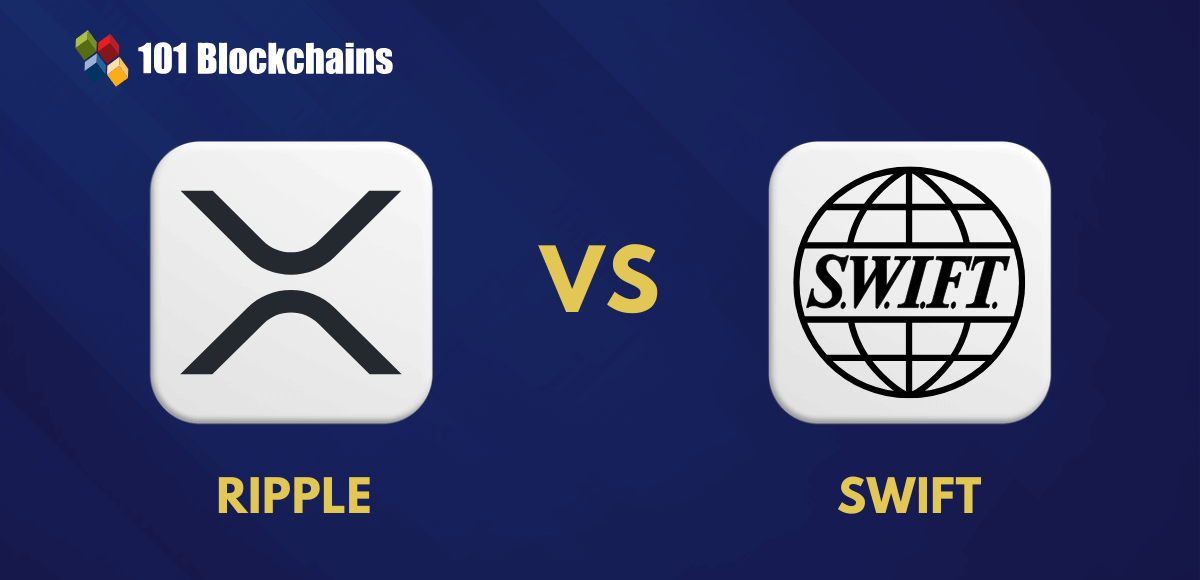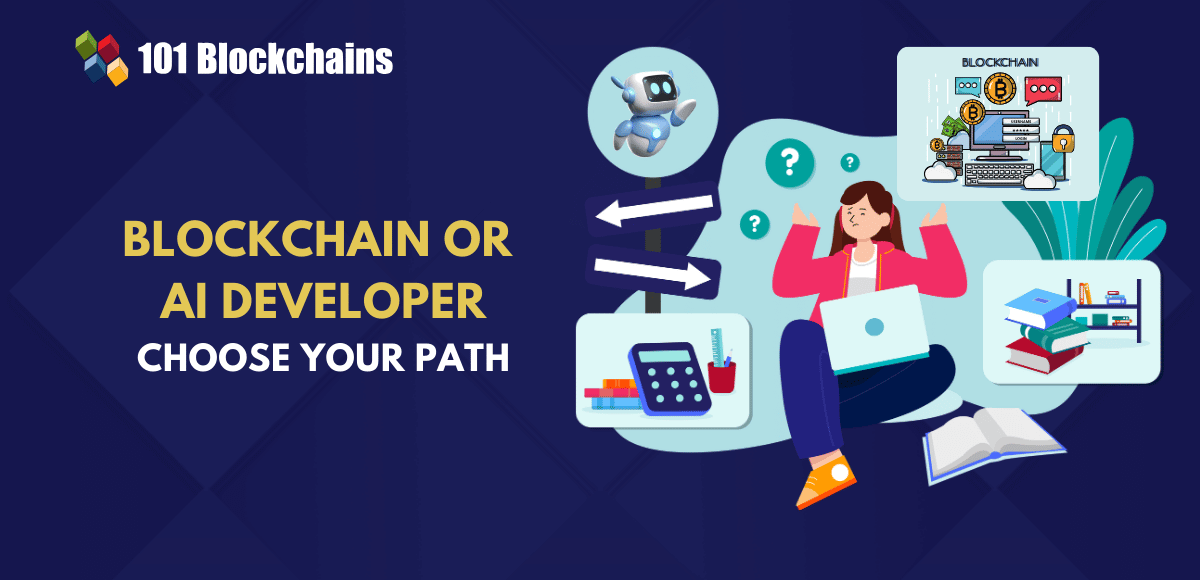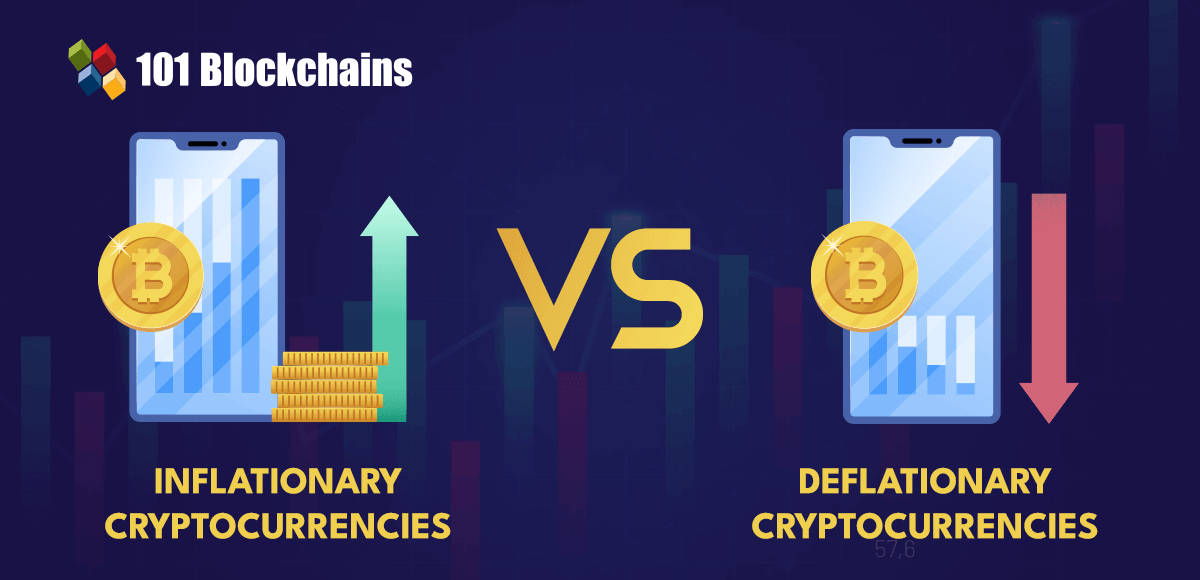Learn how blockchain truly works, master key definitions, and uncover what makes smart contracts so "smart." Dive into the fundamentals, gain valuable insights, and start your blockchain journey today!

Comparisons
Georgia Weston
on August 25, 2022
Optimistic Rollups Vs Zero-Knowledge Rollups
The rise of Ethereum has spelled good prospects for many sectors along with significant setbacks. Ethereum has provided the ideal ground for the growth of many new innovative trends such as DeFi and NFTs. You can notice how the Ethereum and decentralized ecosystem is gradually expanding with new applications and innovation. On the other hand, radical growth in network activity has also resulted in optimistic rollups vs ZK rollups debate for identifying the best scaling solution.
Transactions on Ethereum are gradually becoming quite expensive with every passing day, thereby calling for urgency of scaling. Rollups can definitely offer the ideal solutions for scalability, albeit with crucial security properties and significant trust assumptions. The differences between the two layer 2 scaling solutions can help you find the suitable option among the two options. The following post helps you learn about the differences between optimistic and ZK rollups in detail.
Excited to learn the basic and advanced concepts of ethereum technology? Enroll Now in The Complete Ethereum Technology Course
Differentiating Rollups into Optimistic and ZK Rollups
Before diving into optimistic rollups vs zero-knowledge rollups comparison, you should obtain a basic overview of rollups. Rollups are basically one of the popular options among layer 2 scaling solutions and work by moving transaction processing off the chain. At the same time, they can ensure storage of transaction data on Ethereum chain, thereby facilitating security from layer 1 network.
The working of rollups primarily involves smart contracts which can roll up or bundle the transaction data followed by moving it off the chain for processing tasks. Network participants such as validators or sequences manage the data and submit the collections of highly compressed transaction data to the main chain.
Rollups work by moving computation tasks off the chain, albeit while posting the compressed data on Ethereum main network. Rollups can also feature off-chain data availability, which does not post data on Ethereum, thereby resulting in significant throughput improvements. Now, the optimistic vs ZK rollup debate becomes quite clearly evident in the difference between the methods of verification on each rollup.
For example, zero-knowledge rollups create cryptographic proofs which can help in proving transaction validity. Interestingly, every transaction batch would feature their personal ‘validity proof,’ which must be submitted on the main chain. On the contrary, optimistic rollups assume that all transactions are valid and they could submit batches of transactions without any computation. However, optimistic rollups also feature a challenging period during which anyone could challenge the authenticity of the transaction batch.
Want to understand the core concepts of zero-knowledge proofs? Enroll Now in Zero Knowledge Proofs (ZKP) Masterclass Course
General Differences between Optimistic and ZK Rollups
The Ethereum layer 2 comparison must begin with a high-level overview of the differences between them. As noticed clearly, optimistic rollups assume that the transaction batches are legitimate, while ZK-rollups need cryptographic validation. How are ZK rollups different from optimistic rollups in this factor? The ZK rollups would depend on cryptographic proofs for determining transaction integrity.
On the other hand, optimistic rollups have a challenging period between submitting the rollup and acceptance on the base chain. During the dispute period, challenges can submit fraud proofs for the transactions. Therefore, optimistic rollups can work securely with the work of only honest nodes submitting fraud proofs when required. On top of it, optimistic rollups also leverage economic incentives for avoiding spamming the network through false fraud proofs.
The ZK rollups might have a better appeal in ZK rollups vs optimistic rollups comparison for the element of cryptographic proof. However, they could not be the recommended option for scaling in all cases. A high-level overview of the comparison between ZK rollups and optimistic rollups shows some insights into differences between them.
In the case of optimistic rollups, transactions are assumed as valid, while zk-rollups rely on computation verification of state transitions through validity proofs. However, optimistic rollups are better production-ready with easier programmability. In addition, optimistic rollups also facilitate effective use of EIP-4844 for ensuring cost efficiency. Therefore, optimistic rollups turn out to be the better alternative in reality.
Let us take a look at the differences between them on the grounds of various important factors before making the final choice.
Build your identity as a certified blockchain expert with 101 Blockchains’ Blockchain Certifications designed to provide enhanced career prospects.
Important Points of Difference in Optimistic vs ZK Rollups Comparison
The comparison of optimistic rollups vs zk rollups from a generic point of view serves an impression of which one is faster and cost-efficient than the other. However, it is important to evaluate the differences between them on the grounds of different critical factors such as transaction finality, DeFi readiness, security, transaction costs and user experience.
Here is an overview of the comparison between the two popular layer 2 scaling solutions.

Please include attribution to staging2.staging2.101blockchains.com with this graphic. <a href='https://staging2.staging2.101blockchains.com/blockchain-infographics/'> <img src='https://staging2.staging2.101blockchains.com/wp-content/uploads/2022/08/Optimistic-Rollups-Vs-Zero-Knowledge-Rollups-1.png' alt='Optimistic Rollups Vs Zero Knowledge Rollups='0' /> </a>
-
Ready for DeFi
The cryptographic proof associated with ZK rollups is one of the notable reasons to assume that they are the best alternative. However, ZK rollups end up with many setbacks in terms of scaling for DeFi solutions. The optimistic rollups vs zero-knowledge rollups comparison account for the facility for EVM readiness.
Most of the DeFi applications utilize Ethereum blockchain. Optimistic rollup examples such as Optimism and Arbitrum rely on execution models with considerable similarity to the Ethereum Virtual Machine or EVM. Developers could easily switch to optimistic rollups with an easy process, irrespective of code complexity.
The recently-improved documentation of Arbitrum ensures simplicity of the process for migrating applications. Therefore, you are less likely to experience issues in achieving the functionalities of alternative EVM-supported scaling solutions in optimistic rollups.
On the other hand, compatibility is a critical issue for ZK rollups protocols. The need for validity proofs for each type of transaction in ZK rollups creates complexities for developing the rollup technology. Zero-knowledge rollups have served promising results in use cases across discrete tasks such as trading and direct transfers.
However, they still have to work on providing general purpose support for DeFi smart contracts. At the same time, the optimistic vs ZK rollup comparison cannot turn completely in favor of optimistic rollups for DeFi readiness. ZK rollups could also catch up with the functionalities of optimistic rollups, such as the support for EVM compatibility in a recent update.
Want to learn and understand the scope and purpose of DeFi? Enroll Now in Introduction to DeFi- Decentralized Finance Course
-
Validity Proof
The most striking point of difference in ZK rollups vs optimistic rollups comparison draws attention to the validity proof. As a matter of fact, it is the first point of difference between the two layer 2 scaling approaches mentioned in this discussion. In the case of zero-knowledge rollups, you have validity proofs based on zero-knowledge proofs or ZKP techniques to ensure transaction validity.
On the other hand, optimistic rollups don’t come with inherent validity proofs. Users would have to challenge a transaction bundle in optimistic rollups for computation of fraud proofs to determine validity of transactions. The use of fraud proofs is helpful for proving transaction validity in optimistic rollups. In the case of optimistic rollups, the correctness of transactions depends on game-theoretical incentives. However, the correctness of validity proofs in zk-rollups can be guaranteed with mathematical proof.
-
Transaction Finality
The overview of Ethereum layer 2 comparison between optimistic and zero-knowledge rollups would also reflect on transaction finality. How fast can you withdraw the tokens processed in layer 2 transactions? Optimistic rollups could present a major disadvantage in this case as they feature a 1-week delay in the challenge period.
Users must have to wait through the challenge period before withdrawing the funds, thereby causing a delay in transaction finality. On the other hand, zero-knowledge rollups enable immediate withdrawal of funds due to the validity proofs. Since the validity proofs provide unquestionable proof of the authenticity of off-chain transactions, users don’t have to experience any delays in withdrawing funds.
Get familiar with the terms related to ethereum with Ethereum Flashcards
-
Ease of Programming
The ease of programming is also an important factor for determining the better choice in the ZK rollups vs optimistic rollups comparison. You can look for data compression flexibility and EVM compatibility as the important highlights of optimistic rollups for ensuring easier programming. The data compression advantages in optimistic rollups help in publishing complete transaction data to Ethereum main network as the ‘calldata.’
Even if you have to incur slightly higher rollup costs, you have better ease of data compression and programming. On the other hand, ZK rollups don’t have any need for publishing transaction data on Ethereum. The ZK-STARKs and ZK-SNARKs are responsible for verifying accuracy of the rollup state. However, you have to encounter a hard time in programming ZK rollups which need the cryptographic proof defined clearly.
-
Transaction Costs
The next and one of the most critical factors for comparison in optimistic rollups vs zero-knowledge rollups debate would refer to transaction costs. Optimistic rollups present a considerably optimistic view on the costs as you invest only in the areas that matter of scalability.
Most important of all, rollup costs are considerably lower as optimistic rollups depend on publishing minimal data on Ethereum. Without the need to provide proof for transactions unless challenged in special cases, you are likely to have better cost efficiency in optimistic rollups. On top of it, the support of EIP-4844 protocols can also help in making optimistic rollups cheaper for users.
On the other spectrum of the optimistic vs zk rollup debate, zero-knowledge rollups accompany higher costs due to need for computational proof. The excessive overhead results from the costs associated with creation and verification of proof for different transaction blocks. In addition, it is also important to note the necessity of high-end hardware for creating zero-knowledge proofs. With the high costs for on-chain verifications, zk rollups are obviously a costlier alternative to optimistic rollups.
Enroll now in the Blockchain Scalability and Interoperability Mastery Course to learn the skills needed to develop faster, scalable, robust, and interoperable dApps.
-
Trust
The element of trust also accounts for one of the significant determinants in the Ethereum layer 2 comparison on basis of different factors. You don’t need a trusted setup in the case of optimistic rollups. However, ZK rollups depend on a trusted setup for achieving desired functionality.
-
Live Monitoring
The next crucial differentiator between optimistic and ZK rollups is the facility of live monitoring. In the case of ZK rollups, you don’t have to worry about monitoring the layer 2 chain in real-time for fraud detection. On the contrary, verifiers must maintain track of the actual rollup state alongside the one referred to in the state root for enabling fraud detection in optimistic rollups. Therefore, optimistic rollups depend on live monitoring for fraud detection.
-
Security
The final and most important point of difference in optimistic rollups vs ZK rollups comparison would point at security. The security aspect in optimistic rollups depends on crypto-economic incentives for the users to ensure rollup security. For example, verifiers would receive rewards for successful fraud-proof submissions. On the contrary, zero-knowledge rollups depend on cryptographic proof of security with ZKPs or zero-knowledge proofs. Therefore, both types of rollups are placed toe to toe with each other in a competition on basis of security.
Want to become a Cryptocurrency expert? Enroll Now in Cryptocurrency Fundamentals Course
Final Words
The differences in the optimistic rollups vs zero-knowledge rollups comparison showcase how both the solutions can serve distinct use cases. Zero-knowledge rollups tend to appear as the more secure alternative to optimistic rollups due to the use of cryptographic proofs. However, the security concerns for optimistic rollups can take a back seat with the facility of new crypto-economic incentives to users.
On the other hand, optimistic rollups are a better candidate for DeFi projects with EVM compatibility. At the same time, zero-knowledge rollups with EVM compatibility can change the narrative for layer 2 scaling solutions. Learn more about the two types of rollups and popular examples to find the right choice.
*Disclaimer: The article should not be taken as, and is not intended to provide any investment advice. Claims made in this article do not constitute investment advice and should not be taken as such. 101 Blockchains shall not be responsible for any loss sustained by any person who relies on this article. Do your own research!





